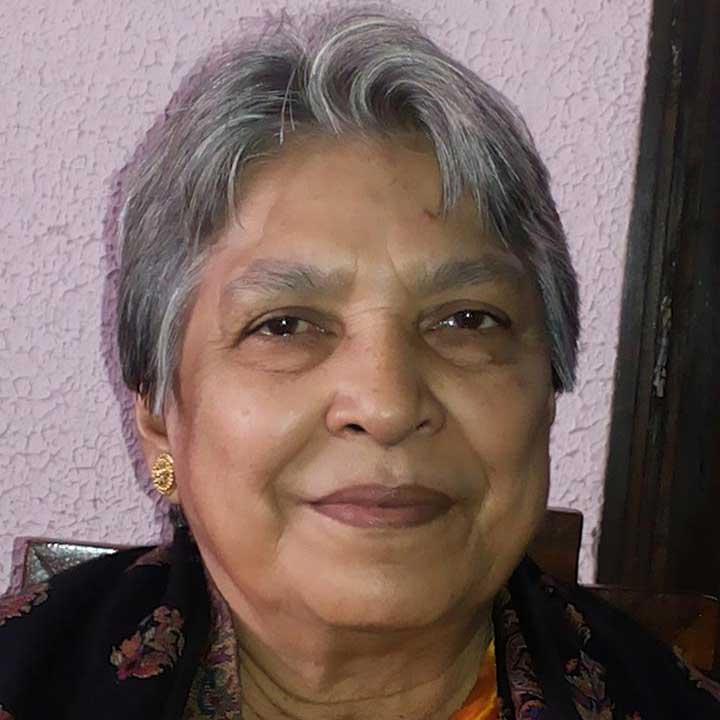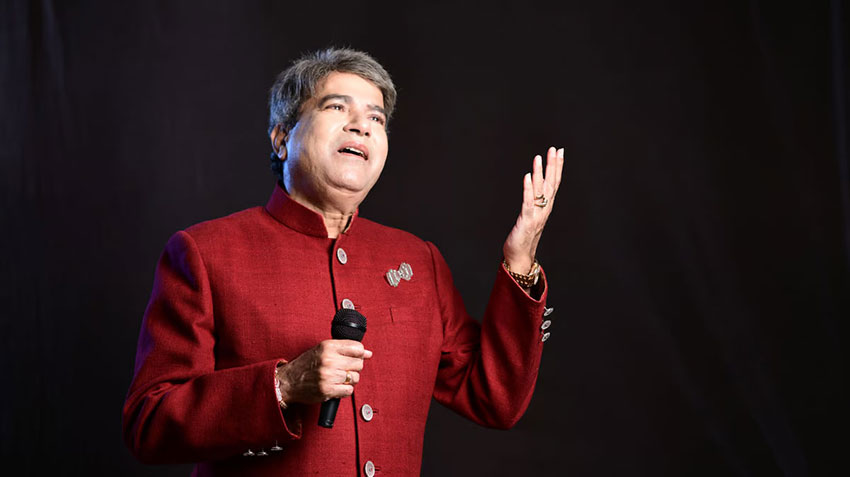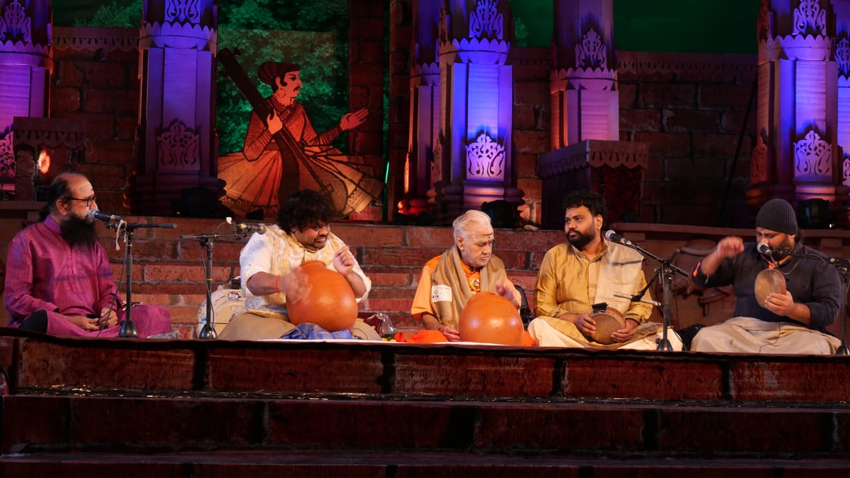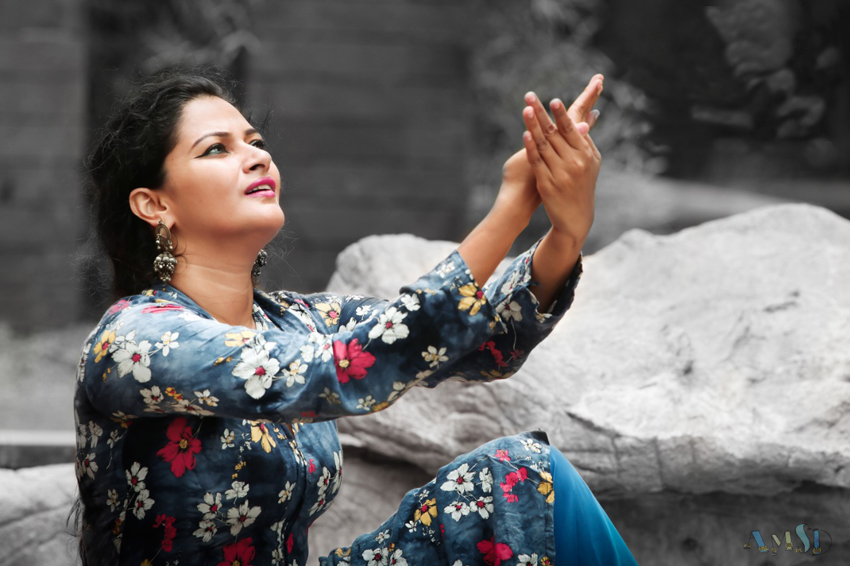Shraddhanjali as the word suggests is paying a tribute. Odissi dancers of Kolkata show their legendary guru, Guru Kelucharan Mohapatra and his talented disciple Sanjukta Panigrahi, their respects annually, where they give an award to a dancer of promise and potential every year. This year Arnab Bandopadhayay’s student Anusmita was honoured indeed. The award winner performed ‘Srita Kamala kucha mandala’ from Jayadeva’s Geet Govinda -a dance composition of Guru Kelucharan Mohapatra-to show her gratitude to her guru. The song is many layered-it is heavily charged with metaphors, similes, rhymes and alliterative lines to convey the qualities of Hari and uphold her guru’s training.
Odissi forum of Kolkata’s annual programme Shraddhanjali this year was special in more ways than one. It included performers of other forms. Udok Performing Arts of Rajib Saha and Moumita Chatterjee presented Ananda Tandavam in Bharatanatyam style in Shiva Keertana piece. There were three dancers in all with Moumita taking the centre stage. The music was appropriate and gave a chance to the three dancers to be at their best appreciated by connoisseurs. The stances were statue-like.
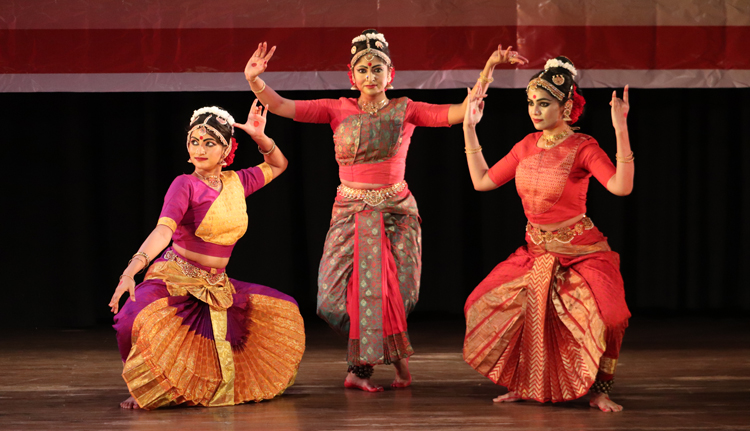
However, what was disappointing was Kalamandalam Venkitt’s rendition of ‘Priye Charrusile’ to a composition of Shankar Mahadevan from Jayadeva’s Geeta Govinda. The music, the costume and the miming fell short of expectations. With the title of Kalamandalam backing him, Venkitt has a responsibility to his alma mater. Also as a member of the faculty of dance in the prestigious Rabindra Bharati University, where Kathakali is a subject included to popularize it in the Eastern Part of India, he did not do justice.
Sattriya dancer Anita Sharma’s Leela Govindam about the activities of Krishna displayed not only the beautiful Sattriya style of dance but also its grace. Sattriya has truly come a long way after its inception. Leela Govindam displayed three astonishing feats of the lord’s life-Viswaroop being one of them. Bhaskar Jyoti Ojha’s music composition brought out the true flavour of Assam’s bhakti movement.

Paromita Moitra’s superb execution of the different techniques in taal teen taal with her group was mesmerizing.
Kathakar Subrata Pandit wove magic on stage with his disciples. The power of his style and composition was brought out in Sargam in raag Malkauns with a 13 beat taal.
Ashimbandhu’s presentation as usual was polished Kathak and cerebral. He sought for peace and harmony.
Badya Charitra-Moods of Drums- was a well planned and executed piece by Nrityangana Kathak Kendra. Paromita Moitra the Artistic Director thinks out of the box and constantly looks for newer content and subject -matter. Chaiti, Sreetama, Reshmi and Nilopa played their parts very well.
Kali Alaripu in Bharatnatyam style was experiential. Samrat Dutta was able to break the usual monotony of an Alaripu with Revathi raagam based Kali shloka interspersed with mnemonics in which relaxation and abhinaya are both intermingled. He is in the best of form.
Kashmira Samanta rendered a Meera Bhajan in raag Panthavarali in Bharatnatyam style choreographed Saroja Vaidyanathan.
This pandemic year Shraddhanjali was one of the first events to be held in a proscenium stage. Supported by the Sangeet Natak Akademi and the Ministry of Culture, their prestigious programme was held at Satyajit Ray Auditorium of ICCR, in Kolkata.
Along with the age-old memorable pieces choreographed mostly by Kelucharan Mohapatra, the forum consisting of loyalists to the Guru Kelucharan school of Odissi included performers of other dance forms as well.
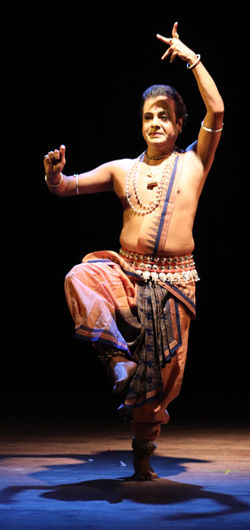
Rajib Bhattacharya’s group of students performed Batu Nrutya. It was a fast-paced pure dance in praise of Shiva. The sheer joy of dance was writ large in their demeanour. Talking about pure Nritya Arpita Venkatesh performed her self composed Yog Pallavi. She did well too. Debabrata Barua’s Shankaravarnam Pallavi and Pattadeep Pallavi by Rajneeta charmed the audience.
Susmita Bhattacharya’s Matangi Dhyan about the nine incarnated form of Devi; Debavrata Dasgupta’s Kalavati Pallavi; Saswati Sarkar’s Kirmani Pallavi and such like pieces are good choreographic dances but performed year in and year out they have become rather hackneyed. When will these dancers come of age and project on newer avenues to unfold their creativity with virgin works of literature, which none have worked on.
Kakoli Bose’ abhinaya piece “Aaj Dekhili Ghana Shyam was aesthetic.
‘Synthesis’ presented by Srjan ensemble -a combination of tradition and contemporary- to the script of Nityanand Misra, though performed many a time was worth a watch.
‘Braja ku chora asuchi’, a lullaby greatly popular among dancers was rendered by Shayomita Dasgupta who was identifiable with mother Yashoda with her natural expressions. Not easy to scare a child to sleep, more so if he is the impish Bal Gopal. The Odissi presentations were a mixed bag with one common thread running through it.
Krishnendu Roy’s Nataraja Vandana and Sthayi, composed by Adi Guru Pankaj Charan Das and choreographed by Sharmila Biswas was a pleasurable watch.
Shantakaram in Gujjara Todi composed and choreographed by Ratikanta Mohapatra to the music composition of Bijoy Kumar Jena was an offering of Darpani to Sraddhanjali. Arnab Bandopadhyay’s disciples’ well-coordinated drama paying obeisance to Padmanabha was praiseworthy. Even a classical composition of two great dance and music creators like Guru Kelucharan Mohapatra and Bhubaneswar Misra can turn out to be not so good, in the hands of a dancer who has the potential but hasn’t taken his work seriously. Subikash Mukherjee performed Shiva Tandava in Raag Bhatiyar and taal Khemta.
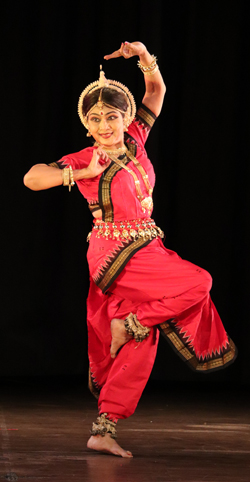
Aloka Kanungo gave a solo rendition of Mahavidya. Her handling of it with dexterity and miming was enviable.
Behala Mudra Kala Kendra was the only group to present Mokshya Nritta.
The nuances of the different shades of Bhagvati was beautifully presented by Lavanya Ghosh. Maya Bhattacharya’s Nritta Sangam was creative.
Nothing comes without toil, more so the visual arts. The performers have always to be vigilant to keep their art alive, which implies hard physical work. As for example if one has to perform Shiva Tandava one has to be in full form to duplicate Shiva like poses.
Guru Brahma by Abhirup Sengupta of Aaddya Kala Tirtham was a mediocre presentation. So was Shinjini Dance Academy’s Arvi Pallavi.
The only short cut that the dancer needs to follow is practice and practice.
However well composed and choreographed a dance piece or a story may be, it loses its charm with a constant presentation.
A piece of my suggestion is that dance being a visual art, a performer who is out of shape and form must not dance on stage. Critiquing is a tough job. It is not the job of a critic to spell out the flaws alone. A vigilant performer has to take everything into account and not jeopardize his or her hard-earned skill with carelessness. Mohua Mukhopadhyay of Gaudiya Nritta fame’s Durga Mangalacharan is a prime example of art that is anything but visually beautiful.
Cramming a festival with so many artists also do not give a chance to the viewers to appreciate all the presentations.
The purpose of the whole exercise is to be able to spread the joy if that is lost everything is lost.




